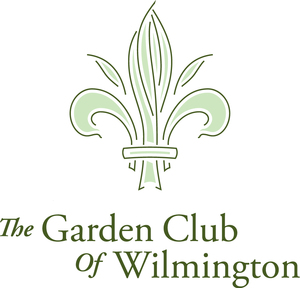1920-1940’s
Japanese Cherry Trees at Lower Brandywine
In 1920, shortly after the founding of the GCW, the Club planted a row of Japanese Cherry Trees along the Kennett Pike by the Lower Brandywine Presbyterian Church and Cemetery as a memorial to the men who died in World War I.
Beautification of the Kennett Pike
Following the suggestion of The Garden Club of America that individual clubs fight the proliferation of advertising signs along highways, Club members successfully persuaded local advertising firms to remove all signs on the Kennett Pike from Wilmington to the Pennsylvania line. Further, the GCW convinced four gas stations in the Greenville area to enter a competition for decorating their businesses with artificial greens. The first prize was $10.00; second prize was $5.00. These efforts were the earliest attempts to beautify Greenville.
Garden at Amstel House
The GCW joined forces with The National Society of The Colonial Dames of America in the State of Delaware and the Society of Colonial Wars in the State of Delaware to fund the restoration of the garden at the Amstel House in New Castle. All plantings were of species known before 1730.
Backyard Gardens Project
Under the leadership of Miss Violet L. Findlay, the Club sponsored the “beautify your backyard” project, which for 26 years endeavored to turn Wilmington into a city of little gardens. Starting in 1924, the Backyard Garden Project equipped hundreds of elementary school children with seed packets and planting instructions. Annual flower shows were staged in every elementary school in the city, each of which was judged personally by Miss Findlay.
Victory Gardens
With the coming of World War II, the members of GCW worked with the State Victory Gardens organization to create a course of lectures in growing vegetables and obtained the use of four acres of good farmland in Greenville for Victory Garden allotments. Of the Club’s 49 members, 48 grew vegetables and 23 raised some form of meat including chickens, ducks, turkeys, squabs, dairy and beef cattle, sheep and hogs, and several also had bee hives.
Churchyard of Old Swedes Church
After the war, the Club turned its focus on the restoration of the churchyard of Old Swedes Church. This daunting job included resetting approximately 350 gravestones and erecting the 16-foot wall along the railroad line. The project was completed in time for the 250th anniversary of Old Swedes Church on May 25, 1948.

